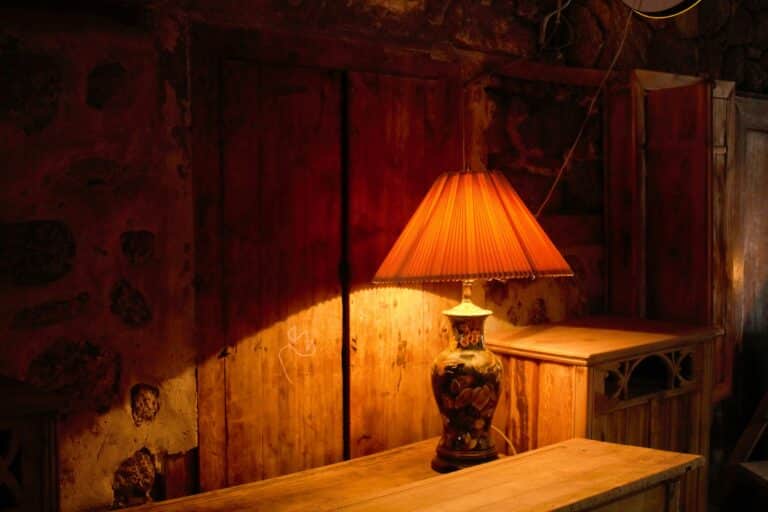💼 Yes, we’re talking about second-hand shopping, a world full of untapped potential for fantastic finds. From designer brands to vintage treasures, thrift shopping can be a gold mine for the fashion-forward and budget-conscious alike. 🛍️ But how do you navigate through the labyrinth of second-hand stores to score the best deals?

That’s precisely what we’re here to address in this comprehensive guide, ‘Thrift Like a Pro: Essential Second-Hand Shopping Guides You Must Have.’ Whether you’re a seasoned thrifter or a beginner stepping into the world of pre-loved fashion, this guide is your roadmap to becoming a thrift-shopping maestro. 👍
A Sneak Peek into What Awaits You
Let’s shed some light on what you can anticipate from this detailed guide. We’ll kick off by debunking some common myths about thrift shopping. Spoiler Alert: No, thrift shopping is not just about buying old, unwanted stuff. It’s about sustainable fashion, discovering vintage gems, and pocket-friendly shopping.
As we advance, we’ll dive deep into the techniques of successful thrifting, from understanding the best times to shop to insider tips on bargaining like a pro. 🕰️ Expect to become well-versed in thrift store etiquette and arm yourself with a robust strategy that will turn your thrift shopping expeditions into rewarding adventures.
Unleashing the Power of Second-Hand Shopping
Delving further into the world of second-hand shopping, we’ll unearth the power of buying pre-loved items. You’ll get to understand how thrift shopping is a step towards sustainability, reducing environmental footprint, and promoting a circular economy. It’s not just a shopping alternative; it’s a lifestyle change that advocates for ethical fashion. 🌏
But that’s not all. In this guide, you’ll also learn how to create your unique style statement through second-hand shopping. How to mix and match, creating chic outfits from thrift store finds, and incorporating them into your wardrobe. It’s about exploring your personal style while being friendly to your pocket and the planet.
Sorting, Searching, and Securing Thrift Store Treasures
What’s a guide without some hands-on advice, right? So, gear up as we take you through the practical side of thrifting. We’ll show you how to sort through the overwhelming racks, how to search for quality over quantity, and how to secure the best thrift store treasures. 🧐
So, buckle up and get ready to embark on a thrift shopping journey like no other. Whether you’re thrifting out of necessity, looking for unique items, or aspiring to make a conscious choice towards sustainable fashion, this guide has got you covered. Let’s unlock the secrets to thrifting like a pro!
See you on the flip side where the world of thrift shopping awaits to unveil its treasures to you. Happy Thrifting! 🎉
The Art of Thrifting: A Comprehensive Guide for Second-Hand Shopping
If you’re someone who loves hunting for unique, vintage items, or just want to save some bucks while shopping, then you’ve probably considered or have been thrifting. Thrift stores can be a treasure trove of items that you can buy for a fraction of their original cost. However, to really get the most out of thrift shopping, you need to have a strategy in place. In this guide, we will go through the essentials of thrift shopping like a pro.
Whether you’re a seasoned thrift shopper or a newbie, there’s always something new to learn. Thrifting is not just about buying second-hand items, but it’s also about being sustainable and conscious about our consumption. So, let’s dive into the world of thrift shopping and discover its ins and outs.
Before we proceed, I recommend watching a comprehensive YouTube video titled “Thrift with Me + Thrift Tips and Tricks” by Alexa Sunshine83 for a visual guide on how to navigate through a thrift store effectively. This video is a great resource for those who learn better visually and prefer real-life examples.
Understanding the Thrift Store Landscape
Not all thrift stores are created equal. Some are run by non-profits while others are for-profit businesses. They differ in their product offerings, pricing, and store layouts. Understanding these differences can help you determine which stores are worth visiting based on what you’re looking for.
In general, thrift stores can be categorized into three types: general thrift stores, consignment stores, and vintage or antique stores. General thrift stores usually have a wide range of items, from clothing and accessories to home goods and furniture. Consignment stores, on the other hand, often carry higher-end or brand-name items and are typically more expensive than general thrift stores. Lastly, vintage or antique stores specialize in older items and collectibles, and their prices can vary widely based on the rarity and condition of the items.
To help you understand the differences among these types of stores, I have created a comparison table below:
| Type of Store | Product Offerings | Price Range |
|---|---|---|
| General Thrift Stores | Clothing, accessories, home goods, furniture | $ |
| Consignment Stores | Higher-end or brand-name items | $$ |
| Vintage or Antique Stores | Older items and collectibles | $-$$$ |
The Science of Thrift Shopping: Tips and Tricks
Now that you understand the thrift store landscape, let’s discuss some tips and tricks to help you get the most out of your thrift shopping experience. Remember, thrifting is like a treasure hunt – you never know what you might find. But with these tips, you can increase your chances of finding something valuable.
Firstly, it’s important to be patient. Thrift shopping is not like regular shopping where everything is neatly arranged and easy to find. You might have to sift through racks and racks of clothes, or dig through bins of items before you find something good. But trust me, the feeling of finding a hidden gem makes it all worth it. 👌
Secondly, always inspect the items before you buy them. Check for any damages, stains, or missing parts. Remember, these items are second-hand and may have been used or worn before. It’s also a good idea to try on clothes before buying them as sizes can vary widely, especially for vintage items.
Know the Best Times to Shop
Thrift stores usually restock their shelves throughout the week. Therefore, it’s best to go thrifting on weekdays when the stores are less crowded and have more stock. Some stores also have special sale days where they offer additional discounts, so it’s worth asking the store staff about it.
Make a List, But Be Flexible
While it’s good to have an idea of what you’re looking for, don’t be too rigid. The fun of thrift shopping comes from the unexpected finds. So keep an open mind and be willing to explore different sections of the store.
To wrap up this section, here’s another YouTube video recommendation. Check out “15 THRIFT SHOPPING SECRETS! How to thrift like a pro” by Beth Jones for more thrift shopping tips and tricks.
Thrifting for Sustainability
Lastly, let’s talk about the environmental aspect of thrift shopping. Buying second-hand is a great way to reduce your carbon footprint as it minimizes the demand for new products, thus saving resources and reducing waste. 🌍
According to a study by thredUP, buying a used garment extends its life on average by 2.2 years, which reduces its carbon, waste, and water footprint by 73%. That’s a significant impact!
So, the next time you go shopping, consider hitting up a thrift store. Not only can you find unique items and save money, but you’re also doing your part to help the planet. Happy thrifting!
Conclusion
In conclusion, this article has explored the intricate nature of software engineering, as well as the important role that technical writing plays in this field. Throughout this piece, we’ve traversed several key concepts, looking at them through the lens of an expert with a background in both software engineering and technical writing.
At the start of our journey, we delved into the foundations of software engineering, understanding its basic principles and methodologies. This groundwork laid the path for further exploration, allowing us to appreciate the complexities and nuance that underpin this expansive discipline. The role of the software engineer was also delineated, as we learned about the multifaceted responsibilities that come with this position.
Next, we navigated the challenging terrain of technical writing, examining its role in explaining complex concepts in a comprehensible way. We underscored the necessity for clarity, precision, and coherence in technical documentation, while also acknowledging the need for creativity and innovation in this sphere. The art of technical writing, as we discovered, is about making the complex simple, the obscure clear, and the confusing coherent.
Furthermore, we delved into the intertwining relationship between software engineering and technical writing. How, as if two sides of the same coin, these fields complement each other in a beautiful synergy. The precision and rigor of engineering find expression in the lucidity and simplicity of technical writing.
It is essential, as we conclude, to re-emphasize the importance of both these fields in today’s rapidly advancing technological world. Software engineering forms the backbone of our digital infrastructure while technical writing ensures that this backbone is understandable and accessible to all.
Therefore, I encourage you to continue deepening your understanding of these disciplines, to share this knowledge with your peers and to apply these concepts in your professional life. Remember, learning is a never-ending journey, and each step you take is an advancement not only for you but for our collective digital future as well.
I invite your thoughts, comments, and experiences on this subject. Let’s engage in a dialogue that enriches our understanding and broadens our perspective. 🗣️
Thank you for accompanying me on this journey. Remember, the road to mastery is always under construction. 🛠️ Keep building, keep learning, keep growing!
Feel free to explore more about Software Engineering [here](https://www.britannica.com/technology/software-engineering) and Technical Writing [here](https://www.impactplus.com/blog/what-is-technical-writing).
Until next time! 🖖
References:
Software Engineering, [Britannica](https://www.britannica.com/technology/software-engineering)
What is Technical Writing? [ImpactPlus](https://www.impactplus.com/blog/what-is-technical-writing)



